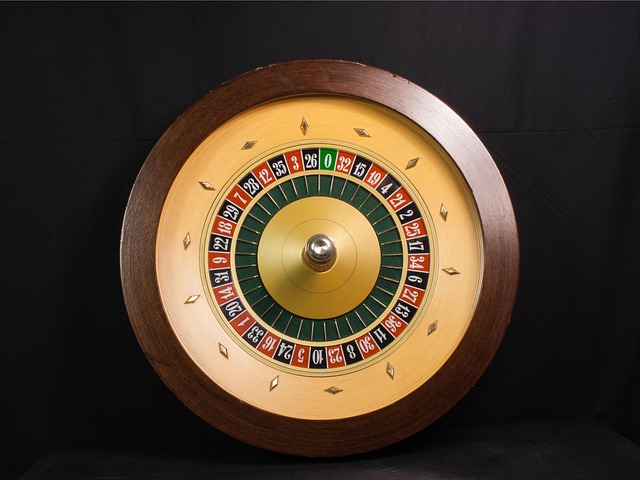Spin and Win: The New Trick Online Apps Use After Every Purchase
- Category: Pics |
- 24 Oct, 2025 |
- Views: 339 |

The Wheel That Won’t Stop Spinning
You’ve seen it. That colorful wheel popping up after checkout, promising discounts, freebies, maybe even a jackpot coupon. It’s not just a gimmick anymore. Rather, it’s a critical sales and call-out strategy most online apps are now using.
At the same time, in 2025, 70% of Global 2000 companies use gamification in some form. The bottom line is that “Spin to win” is the most common recall element that brands use almost emphatically against every successful sale completed by customers.
E-commerce apps like Shein, Sephora, and Starbucks have turned post-purchase into a mini-game. Spin the wheel, scratch the card, unlock a mystery box. Suddenly, buying socks feels like playing a slot machine.
Why This Works: The Psychology Behind It
Gamification taps into primal instincts, competition, curiosity, and reward-seeking. Behavioral scientists call it the hooked model. You act, you get a reward, you come back for more. Apps aren’t just selling products; they’re selling dopamine hits.
A Statista report shows gamified apps see 20–30% higher engagement. That’s not pocket change, it’s billions in extra revenue. In fact, gamification in e-commerce is projected to generate $32 billion in sales revenue in 2025.
Casino games figured this out decades ago. Slot machines thrive on variable rewards—the thrill of uncertainty. Now retail apps borrow the same playbook. Spin-the-wheel popups mimic slot reels. Scratch cards echo lottery tickets. The psychology is identical: unpredictability hooks harder than guaranteed rewards.
From Shopping to Gambling: The Blurred Lines
Here’s where it gets interesting. Online casino mechanics aren’t just influencing retail, they’re infiltrating it. Loyalty programs now look suspiciously like tiered casino memberships. Bronze, Silver, Gold, sound familiar?
Apps like Nike Run Club and McDonald’s Monopoly use streaks, badges, and surprise bonuses. Meanwhile, casino platforms themselves are evolving, adding skill-based mini-games and progression systems borrowed from video games. The crossover is real.
The global online gambling market? $118.35 billion in 2024, projected to hit $191.81 billion by 2029. Retail wants a slice of that engagement pie, minus the regulatory headaches. So they cherry-pick the fun parts: spins, streaks, leaderboards.
Gamification isn’t fluff. It’s math, and the math is staggering. When companies report up to 30% higher retention rates from gamified loyalty programs, that’s not a rounding error—it’s a tectonic shift in how brands keep customers hooked.
Think about it: a simple spin-the-wheel feature can lift conversions by 12–18%. That’s millions in extra sales for big retailers. Why? Because unpredictability works better than boring coupons.
The market size tells its own story. $43 billion in 2024, projected to hit $172.4 billion by 2030, that’s a CAGR of 26.1%. You don’t see growth curves like that in traditional marketing.
This isn’t a side hustle for brands; it’s becoming the backbone of engagement strategies. Every spin, every badge, every streak is part of a $172-billion machine designed to keep you playing. Even when you think you’re just shopping.
The Consumer Side: Fun or Manipulation?
Let’s be honest. Spinning a wheel feels harmless. A quick thrill, maybe a discount. But it’s engineered stickiness. Every spin is a micro-interaction designed to keep you engaged.
The variable reward principle, borrowed straight from casino psychology, creates anticipation loops. You’re not just buying; you’re playing, and playing means staying. One of the platforms with the best variations in gaming styles and UIs is Lukki Online Casino.
Casino apps do this unapologetically. Free spins, deposit bonuses, cashback offers—they keep players hooked. Retail apps? They wrap it in pastel colors and call it “fun engagement.” Different packaging, same brain chemistry.
Beyond the Wheel: What’s Next?
Gamification isn’t stopping at spin-to-win. Expect AR-powered scratch cards, VR shopping quests, and AI-driven personalization that adapts rewards in real time. Imagine walking into a virtual store where every aisle hides a challenge.
Complete it, earn points, unlock perks. It’s retail meets gaming meets casino. All rolled into one dopamine-driven experience.
Real-World Examples That Hit Hard
Shein: Daily check-ins, outfit contests, and spin-the-wheel discounts keep users glued. The brand uses interactive challenges and social sharing to turn shopping into a game, creating a sense of progress and community that drives repeat purchases.
Starbucks: The Rewards app feels like a level-up game. Stars, badges, tiers. Seasonal challenges like Star Dash and “Starbucks for Life” add urgency and excitement, making every coffee run feel like a quest for achievement.
McDonald’s Monopoly: A seasonal campaign that drives millions in extra sales. Collect-and-win mechanics, rare game pieces, and app-based codes blend nostalgia with digital engagement, boosting loyalty and generating billions in incremental revenue.
Casino Platforms: Slot games now feature progression systems and skill-based rounds, echoing mobile gaming trends. Players unlock badges, complete missions, and climb ranks.
Turning gambling into a structured, goal-driven experience rather than pure chance. Even if you are taking chances, choose platforms that offer free spins for trial. 200 spins ca can be a great option for you.
The Ethical Question
Is this harmless fun or subtle coercion? Retailers argue it’s engagement, not exploitation. Critics say it’s a slippery slope. Especially when casino-style mechanics creep into everyday shopping.
Gamification blurs lines between commerce and compulsion. The question isn’t whether it works. It does. The question is: how far will brands push before regulators step in?
The Bottom Line
Spin-to-win isn’t just a cute add-on anymore; it’s a calculated move. A move backed by billions, behavioral science, and a market growing at a 26% CAGR.
Every wheel, every scratch card, every surprise box is a hook. It’s retail borrowing tricks from casinos, blending commerce with play, and turning transactions into micro-gambling moments.
For businesses, it’s genius. Engagement spikes, retention climbs, and revenue flows. For consumers? It’s complicated. Sure, it feels fun. Who doesn’t like a free spin?
But beneath the pastel colors and cheerful animations lies a system designed to keep you clicking, buying, and spinning. The same mechanics that keep slot players glued to screens are now shaping how you shop for sneakers or coffee.
So, what’s next? AR scratch cards, VR treasure hunts, AI-driven reward wheels, and more. Gamification isn’t slowing down.
The question isn’t whether brands will keep spinning. They will. The real question is: how much control do you want to keep when every purchase feels like a game?
Because at some point, the line between shopping and gambling blurs so much, you might not even notice you’ve crossed it.

